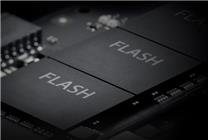Summary:
- The rising demand for AI technology is driving up prices for both DRAM and NAND flash memory, particularly QLC flash memory.
- Major manufacturers like SK Hynix and Samsung are adjusting production strategies to meet the surging demand for high-capacity SSDs.
- Predictions indicate SK Hynix may command over half of the QLC market share by next year, reflecting a significant industry shift.
The Rising Tide of QLC Flash Memory Prices Amid AI Demand
In recent developments, the memory chip market is experiencing significant price increases, with both DRAM and NAND flash memory, particularly QLC (Quad-Level Cell) flash memory, at the forefront. This trend is primarily fueled by the burgeoning demand from the artificial intelligence (AI) sector. As AI models evolve, they require vast amounts of storage and memory, leading to increased pressure on manufacturers to deliver high-capacity storage solutions.
The surge in demand is particularly notable for SSDs with capacities of 120TB or more. Manufacturers are keenly assessing order volumes for 2026 and strategically recalibrating their production capacities to include a higher proportion of QLC flash memory. This shift is a direct response to not only current market demands but also projections for future needs in an increasingly data-driven landscape.
The industry’s response has been swift. In August, SK Hynix made headlines by announcing the mass production of the world’s first 321-layer stacked flash memory, with a focus on QLC technology rather than the more traditional TLC (Triple-Level Cell) type. This initiative positions SK Hynix as a proactive player ready to meet the specific demands of the AI market, setting the stage for potential market leadership.
Other industry giants, including Samsung, Micron, Toshiba, and SanDisk, are also pivoting towards the increased production of QLC flash memory. Notably, Samsung’s next-generation V9 flash memory will incorporate QLC technology for the first time, signaling a significant evolution from its previous V8 generation, which lacked this option. However, Samsung faces challenges, as the mass production of its V9 QLC flash memory has been delayed until early next year, providing SK Hynix a window of opportunity to solidify its market position.
Analysts at LS Securities have projected that SK Hynix, along with its joint venture Solidigm, is expected to capture over 51% of the QLC market share by next year, a notable increase from the current 45%. This shift represents a critical moment in the industry, where the balance of power in the flash memory market is poised for realignment.
As manufacturers adapt to these changes, the implications for consumers and businesses are profound. The increased focus on QLC flash memory reflects a broader trend towards data-centric applications driven by AI, necessitating advanced storage solutions that offer both performance and affordability.
The upward trajectory of QLC flash memory prices is indicative of a transformative phase in the tech industry, with leading manufacturers racing to innovate and meet the challenges presented by AI. As we move forward, the competitive landscape will likely evolve, with companies that successfully leverage QLC technology standing to gain a significant advantage in this rapidly expanding market.
In conclusion, the increasing demand for high-capacity SSDs is reshaping the memory chip industry, as manufacturers pivot to meet the needs of the AI-driven market. The developments regarding QLC flash memory not only highlight the rapid technological advancements but also illustrate the dynamic nature of market demand.



